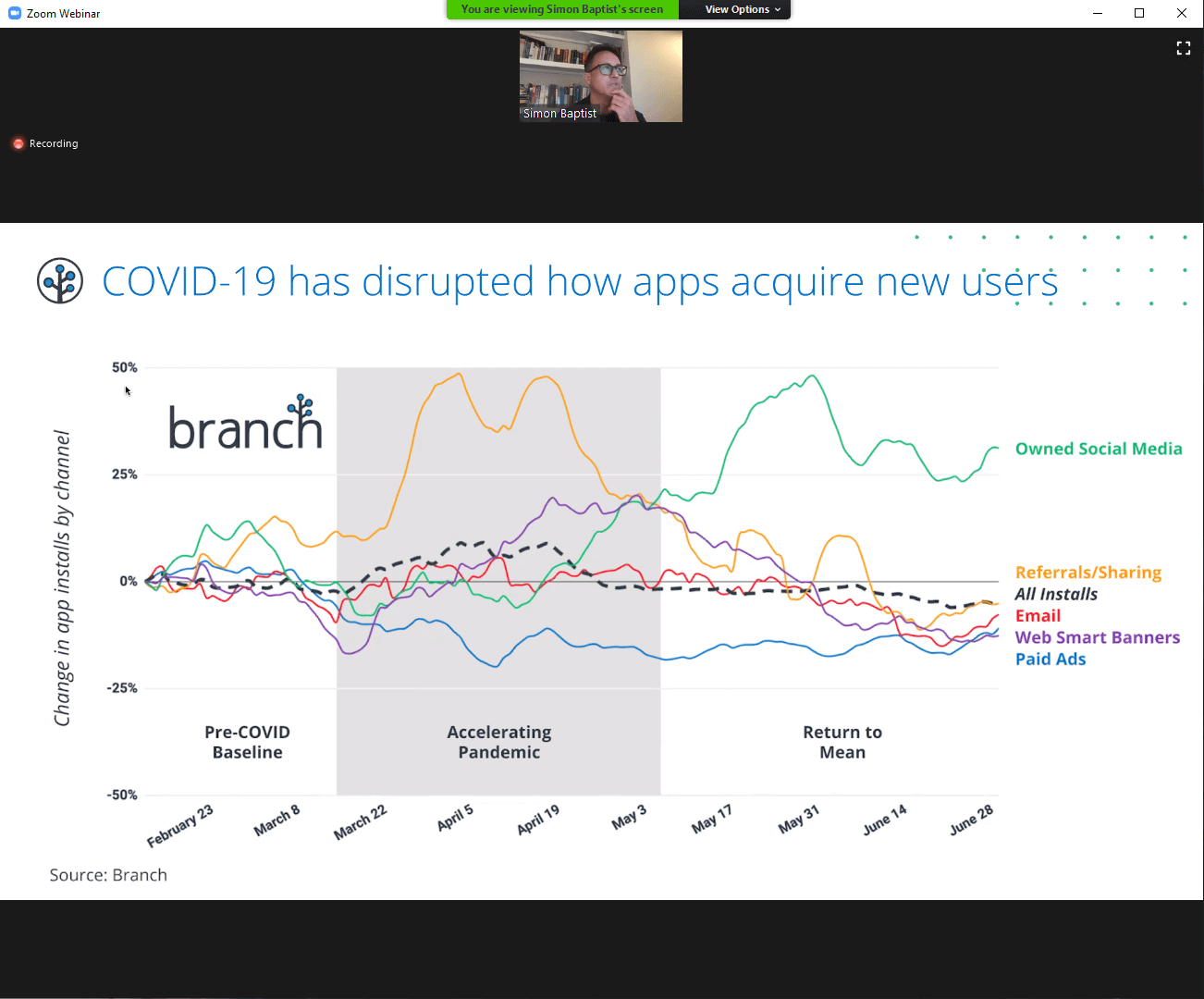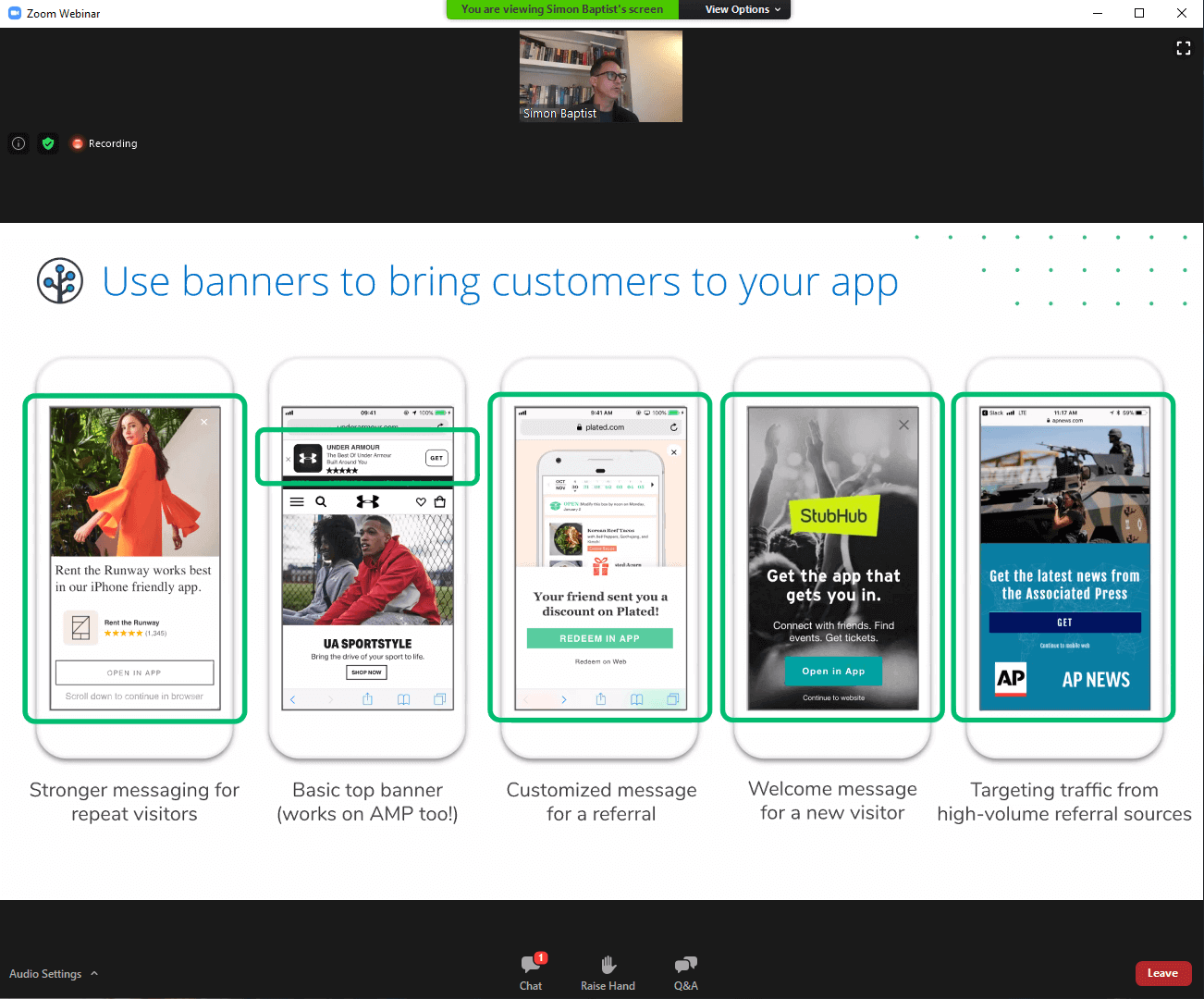In part two of our Reimagine Growth webinar series, Simon Baptist, Director of Business Development at Branch – EMEA and Aniket Sinha, Partnerships Manager, India and SEA at Branch talked about the top channels that other brands are using successfully and how they do it. Below, we present the ideas they laid out in the session.
How Many Paid Channels Do Brands Use?
Do you know how many paid channels brands use for acquisition?
Branch did some analysis based on 200 million acquisitions across the Asia Pacific market recently and found that the world’s top brands — the more traditional enterprise companies — use 4 to 6 paid channels on average.
Meanwhile growth brands (those still in the process of growing their user base, and usually more mobile-centric) use 8 to 10 paid channels on average. If they really want to drive scale, they go from the usual channels to more channels.
And these channels can be everything from traditional affiliates or social media to programmatic advertising. A few tips:
- Streaming video and OTT are becoming an important channel for driving app installs.
- And then there’s OEM. Brands are finding interesting ways to get on mobile smartphones early, which has turned OEM into a paid channel of its own.
Organic Channels That Drive Growth
Now, do you know how many organic channels brands use for acquisition?
Top brands use 4 to 6 organic channels on average. Growth brands use only 3 to 4 channels.
This is the flip side of the paid channel situation, since top brands are using more organic channels and growth brands less.
There could be several reasons why.
A top brand could have a website that’s been generating a lot of traffic already. Or they have a longer running CRM program and have a lot of contacts and existing customers in their database that they’re trying to convert.
Some of those organic channels could include:
- SMS
- Emails
- App to app
- Social media
- Web to app
- SEO
- ASO
Branch’s Mobile Growth Handbook looks at the trends in the mobile ecosystem. And for 2020, it looks at the impact of COVID-19 on the industry. One surprising clear trend has been:
Of attributed installs, ads are driving less installs vs. other channels.

Screenshot showing ads are driving less installs
And if you dig a little deeper at how apps are acquiring new users, you will see that COVID-19 has really changed up how acquisition happens.

Screenshot showing how COVID-19 has disrupted user acquisition
Here, you see how owned social media has really taken off as a channel to get people to install apps. Meanwhile referrals and sharing are only a distant second, followed by email, web smart banners, and paid ads.
Organic acquisition channels show over 4x higher click-to-purchase rates over ads.
But if you’re not measuring organic acquisition, you’re not going to see this. You’ll have black holes in your attribution buckets because you’re not necessarily going to leverage that mix of acquisition channels.
So here’s a question: how many paid vs organic channels should a brand use? The answer, of course, is it depends. You should be using the most you can, sensibly, so you can make that mix of channels work for you.
Some ideas below.
Use These Organic Channels to Drive Acquisition & Retention
Use banners to bring customers to your app
The idea is to use banners and drive organic traffic — or traffic from your website — to your app.
TBS & TNT saw a 10x increase in installs compared to the industry average by using smart banners on their website and deep linking directly into their apps.

TIP: Use banners to bring customers to your app
Use deep linking in email
71% of emails are being opened on mobile. So make sure you’re deep linking from the email to a place in your app.
How many times has it happened that you open an email on your phone and you know you have the app, but when you click on the link, you get taken to the mobile web and are asked once again for your consent? That shouldn’t happen. You end up training your users to not open your emails and they stop giving you attention. That’s a potential leaky bucket.
Strava noticed app users who engaged with marketing emails were being routed to the mobile web where engagement was significantly lower. They fixed it with deep links and now, more than 40% of email clicks result in app engagement.
Use referral program best practices
Referrals are an unsung tool for driving acquisition. It’s basically one person recommending an app to another person. And the benefits are huge.
Just make sure you do it correctly. Some best practices:
- Ensure your links can share the content inside your app and that they deep link through install.
- Make it easy to share on your most used platform.
- Share a screenshot of the content in addition to a link.
- Enable sharing when a user takes a screenshot by showing a popup asking if the user wants to share.
Use QR codes like it’s 2002
QR codes have been around for a while, and have been used in many ways. But for a while there, they seemed to lie low. The truth is QR Codes never went away, and are only going to get bigger. We’re seeing mainstream TV campaigns using QR codes now like Dunkin Donuts’ recent QR Code challenge on America’s Got Talent.
See the full recording of our session with Branch in this video:
ABOUT THE SPEAKERS
Simon Baptist is the Director of Business Development at Branch – EMEA and works with all parts of the mobile ecosystem including advertisers, agencies, advertising platforms and technology partners toward helping unlock the mobile opportunity.
Aniket Sinha is Partnerships Manager, India and SEA, at Branch. Aniket’s experience spans across 3 major legs of the digital marketing industry – performance marketing agencies, brand and attribution industry. His previous roles include Head of Digital marketing at Flyrobe and Performance marketing at ADA & Merkle.

The User Retention Pocket Guide
Shivkumar M 
Head Product Launches, Adoption, & Evangelism.Expert in cross channel marketing strategies & platforms.
Free Customer Engagement Guides
Join our newsletter for actionable tips and proven strategies to grow your business and engage your customers.















































